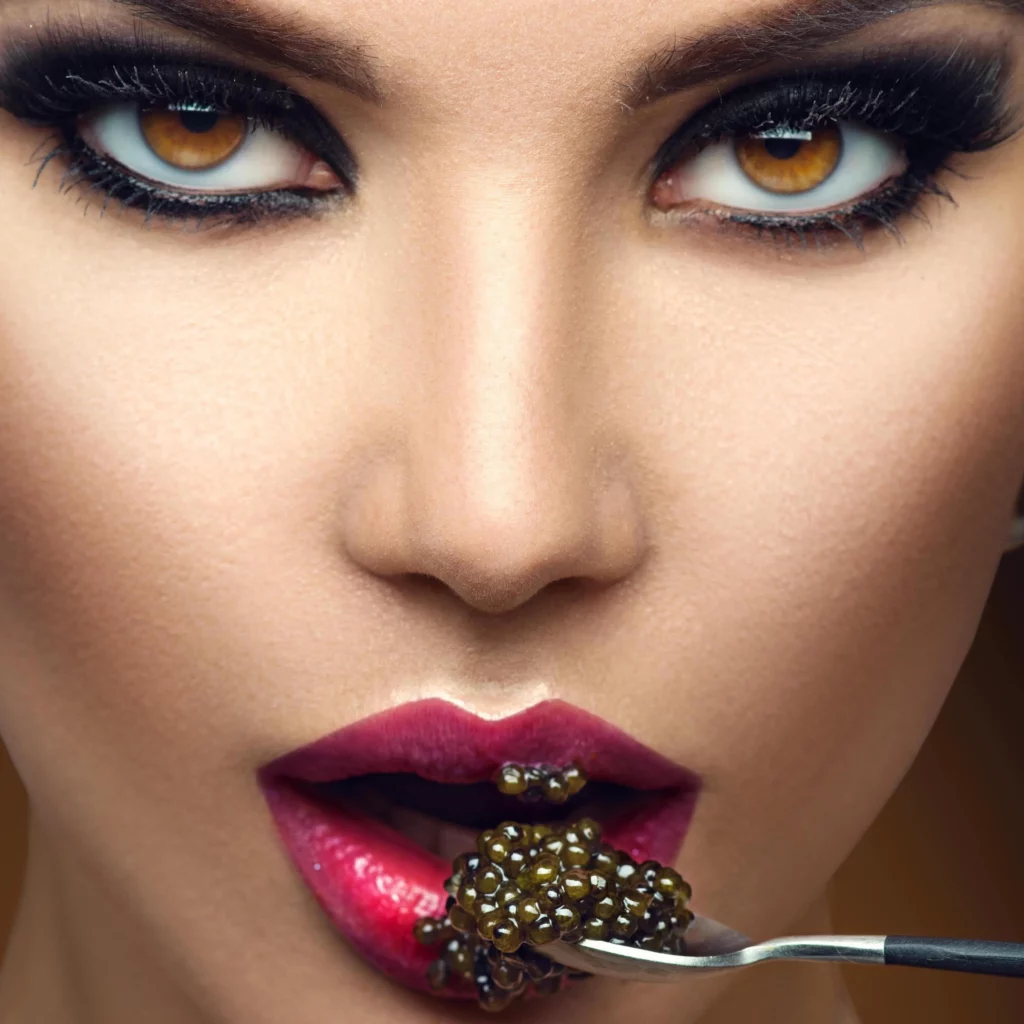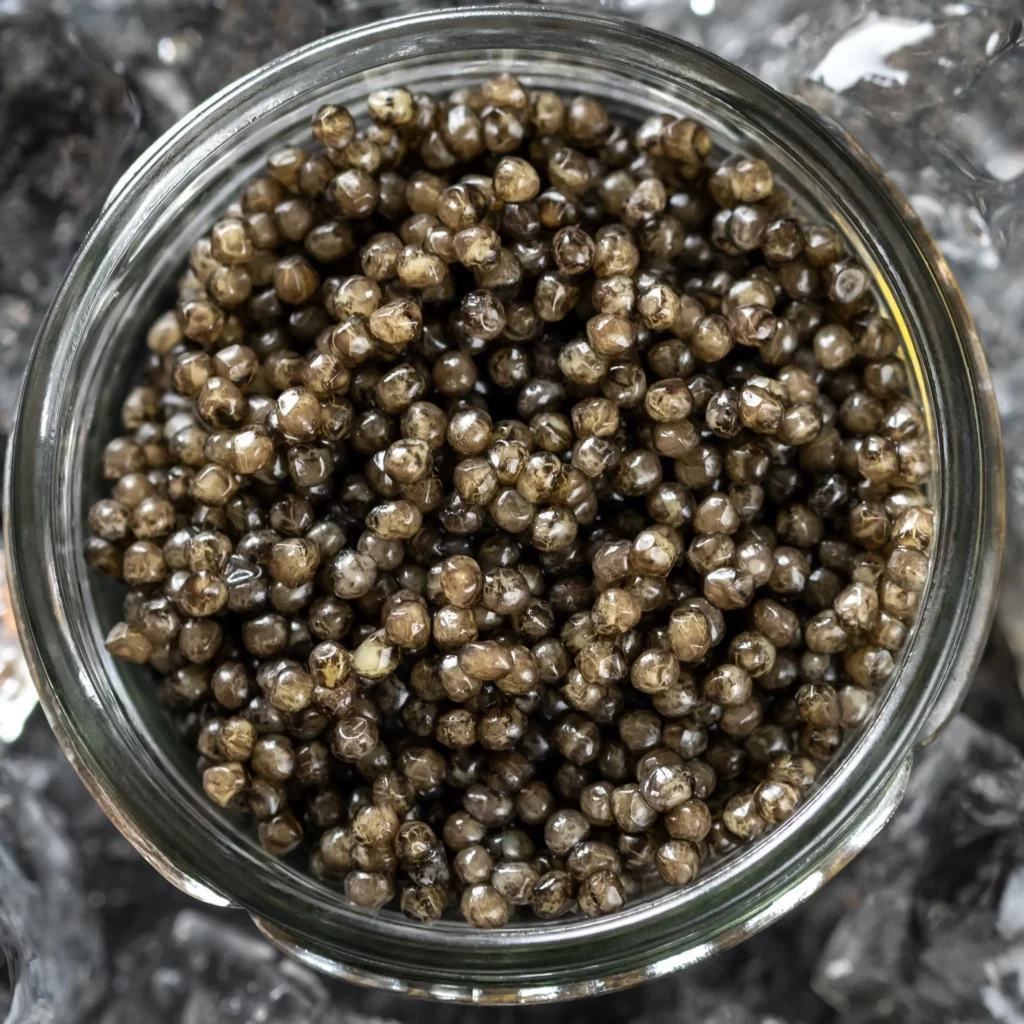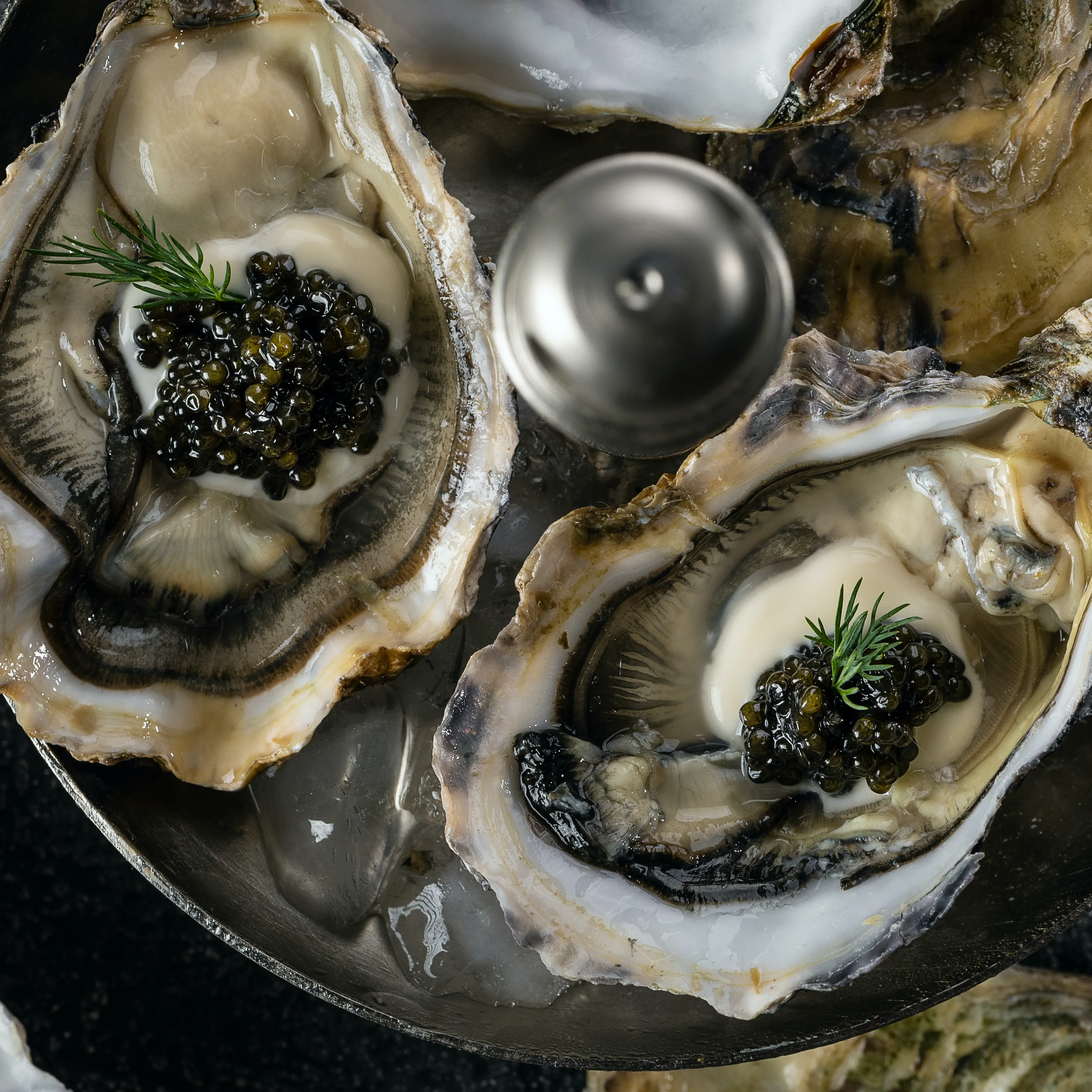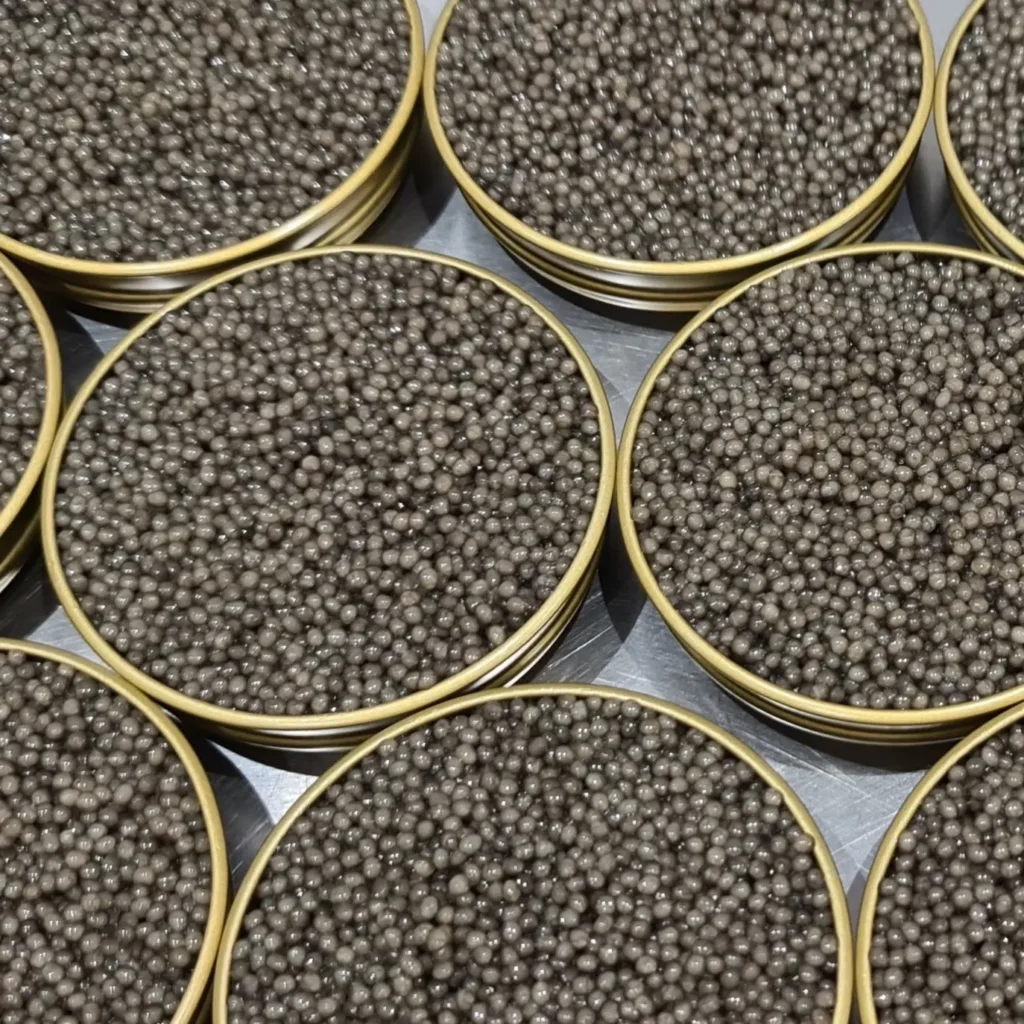
When you’re around friends, you might not have to worry too much about how to eat caviar with proper etiquette. However, if you’re at a fine-dining restaurant, you might want to follow proper protocol:
Don’t eat too much when served caviar as an hors d’oeuvre, no matter how much you might be tempted by its luscious flavor. It’s considered gauche to eat more than an ample serving of about 2 ounces, or about two spoonsful.

Choose servers and utensils made of glass, bone, tortoiseshell, wood, plastic, or to be truly traditional, mother-of-pearl or gold.
Don’t chew the caviar, as you will lose a lot of the flavor. Use your tongue to feel the beads of fish eggs and taste the buttery fat.
Take small bites of the caviar. It’s an expensive product, and it should be savored and enjoyed, not scarfed down. Start with about a half-teaspoon and really luxuriate in the experience of eating the caviar.

Fine caviar should be served very cold in a bowl nested inside a larger bowl filled with ice.
Caviar doesn’t freeze until it’s below 28 degrees, so you can store it in the coldest part of the fridge to get it as ice-cold as possible without it actually freezing, which can affect the texture of the eggs.

The majority of caviar comes from three types of sturgeon: beluga, sevruga, and ossetra. If the eggs come from a type of fish other than sturgeon, like salmon, it’s not really caviar—it’s roe, the generic name for fish eggs.
The finest caviar should taste neither fishy nor overly salty.